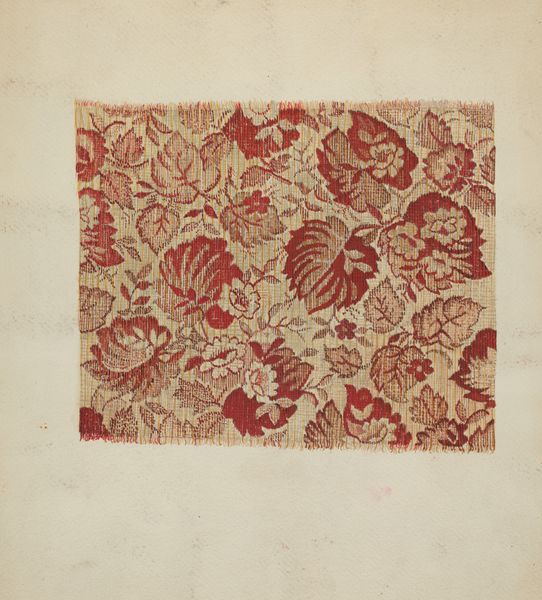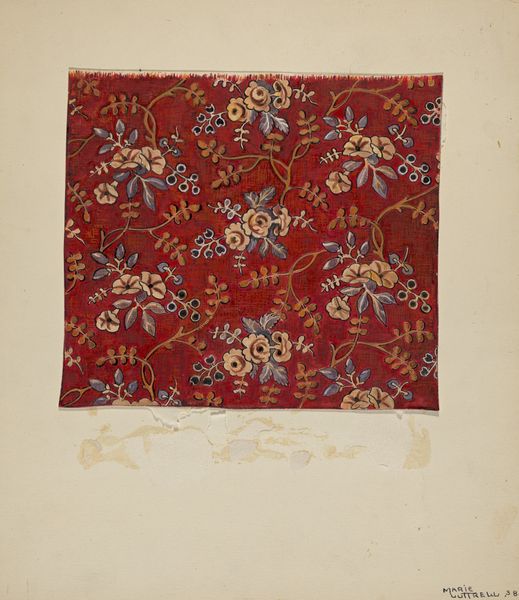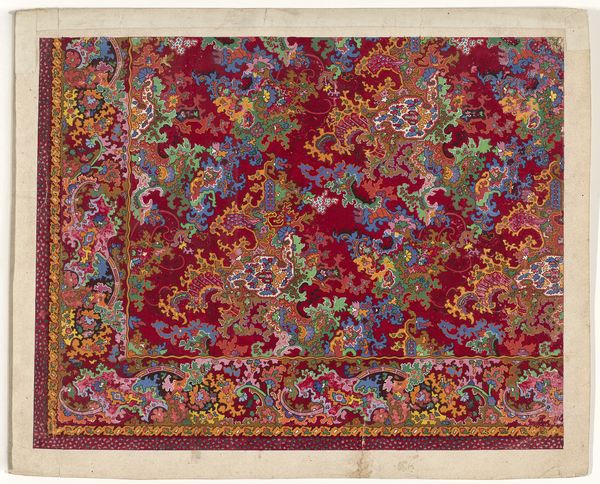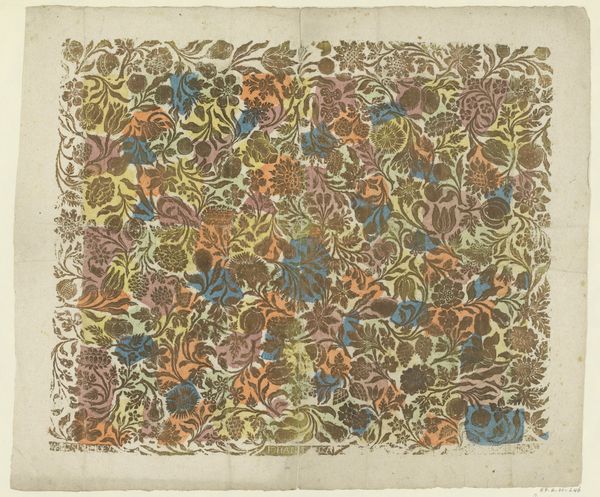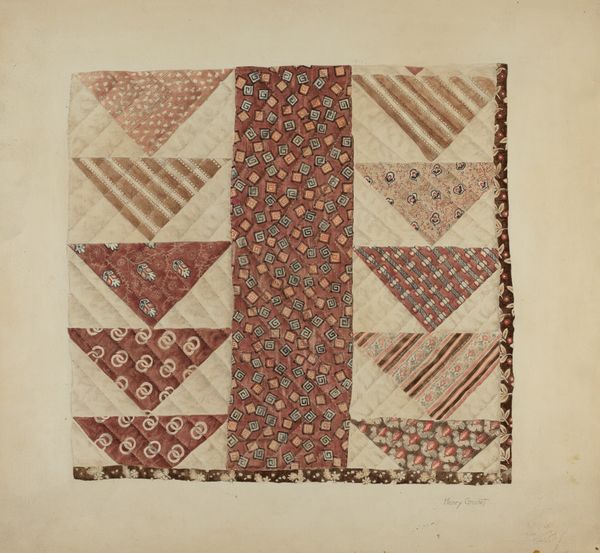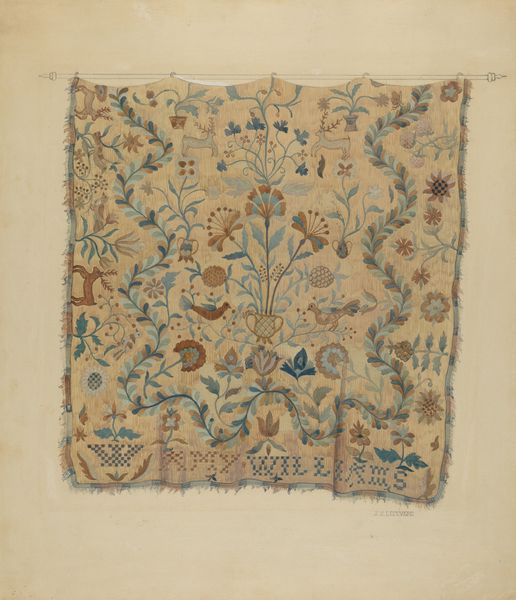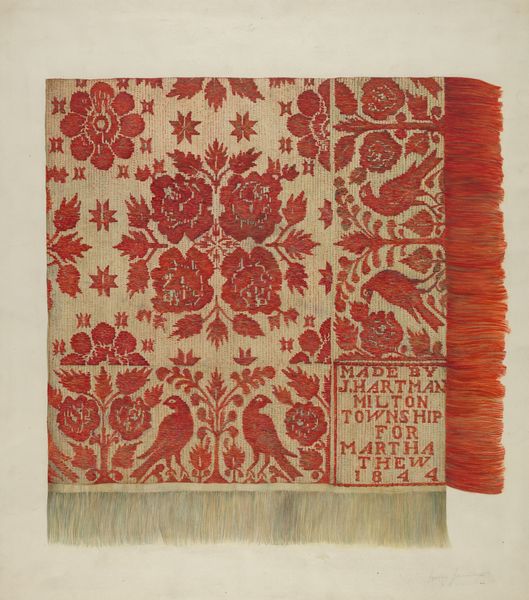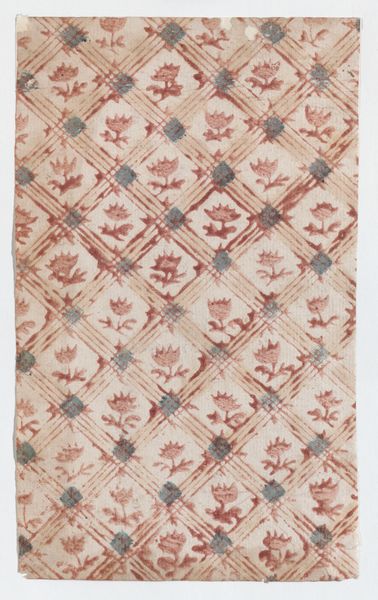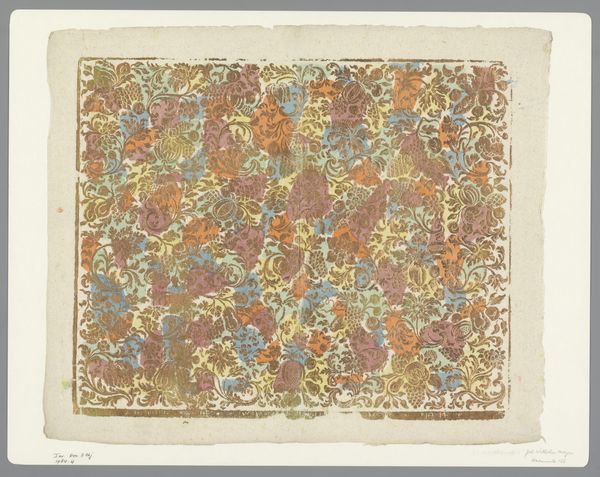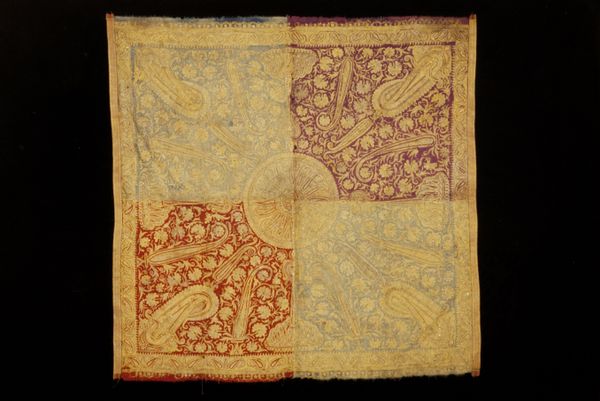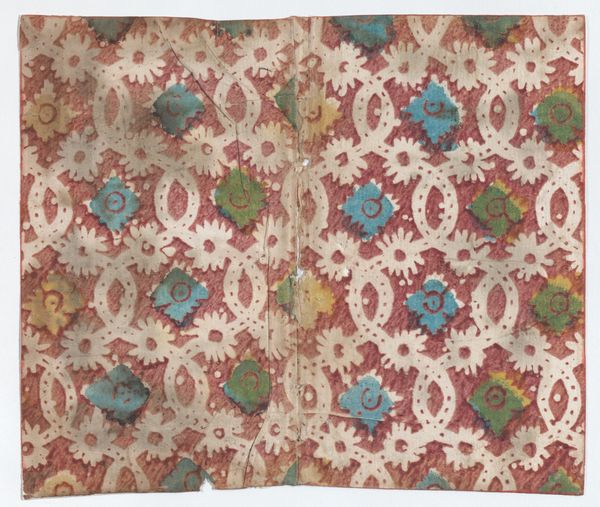
drawing, fibre-art, textile, watercolor
#
drawing
#
fibre-art
#
textile
#
watercolor
#
decorative-art
#
watercolor
Dimensions: overall: 42.9 x 35.8 cm (16 7/8 x 14 1/8 in.) Original IAD Object: 36" wide
Copyright: National Gallery of Art: CC0 1.0
Curator: This is Marian Curtis Foster's "Ingrain Carpet," created around 1937. It incorporates watercolor, drawing, and textile techniques. What's your initial take on this intriguing piece? Editor: It's...textured, surprisingly so for something on paper. There's a tension between the implied softness of the carpet design and the evident rigidity of the woven structure that the artist painstakingly depicts. The colors, browns, tans, and golds, contribute to a feeling of domestic warmth. Curator: Absolutely. This work connects strongly to the Arts and Crafts movement. Ingrain carpets, a type of flat-woven reversible carpet popular in the 19th and early 20th centuries, speaks to broader questions of design democratization and access to beautiful, well-made goods in domestic settings. Foster captures a shift away from industrial ideals towards handmade art forms. Editor: I notice how meticulously the artist rendered the weave itself. Each individual thread seems important. There’s something incredibly deliberate in its construction, almost an attempt to arrest this kind of craftsmanship at risk of being lost due to industrial manufacturing at the time. Curator: That's insightful. Given Foster's career as an educator and craftsperson, this drawing serves not just as a visual representation but potentially as a kind of document. Think about its function. Is it for education, or for historical documentation? Does its intent shape how we understand this image as art? Editor: Interesting angle. Looking closer, the chromatic unity supports that idea; It has an interesting structural component. The color harmony emphasizes the carpet's material rather than creating spatial illusions, highlighting its nature as surface design. Curator: And within that design lies a complexity. The floral patterns, though conventional, offered women artisans like Foster a creative vocabulary through which they expressed themselves in domestic life and commerce. We can read into the intentional repetition of patterns and shapes of this textile a commentary on women's roles. Editor: I see. By concentrating on its formal structure, one can almost abstract the weave, the patterns of interlace that point us to something more innate to human construction and arrangement of objects, but it seems your viewpoint gives voice to the anonymous craftswomen of this bygone era. Curator: And perhaps both realities are woven together here in the image itself: technique and craft in intersectional solidarity. Editor: A compelling observation—a perfect lens for understanding "Ingrain Carpet" with expanded perspectives.
Comments
No comments
Be the first to comment and join the conversation on the ultimate creative platform.
